2023
Her Excellency the Honourable
Linda Dessau AC CVO
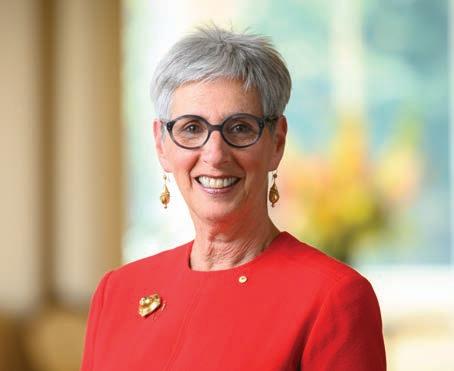
 Governor of Victoria and MSO Patron
Governor of Victoria and MSO Patron
As Patron of the Melbourne Symphony Orchestra, I would like to welcome you to these special London Symphony Orchestra performances.
This program marks the launch of an exciting new collaboration between two of the world’s finest orchestras. It is a partnership that will add to the vibrancy of Victoria’s musical culture, while providing an opportunity for exchange and learning between musicians.
As we celebrate the Orchestras’ shared passion for bringing music to the community, we also welcome to Melbourne, Sir Simon Rattle OM CBE, LSO’s Music Director and one of the greatest conductors of his generation.
These performances, coinciding with the celebration of the Coronation of His Majesty King Charles III, promise music at the highest standard of orchestral excellence.
Welcome
Kathryn McDowell CBE DL Managing Director


London Symphony Orchestra
It is a real pleasure to be here in Australia, where the LSO has a long and treasured history of performing. Our 1966 world tour brought the Orchestra here for the first time over 50 years ago, performing 14 concerts across the country, and each time we have returned since (in 1983 and most recently in 2014) has been a momentous occasion, just as this 2023 tour promises to be. Music has the power to inspire, uplift and soothe, as we hope you will experience in the selection of programs we have brought to Brisbane, Sydney and Melbourne. Over nine days the Orchestra performs vast symphonies by Mahler and Bruckner, delicate showcase works by Ravel and Debussy, plus John Adams’ uniquely creative Harmonielehre and a new piece, Sun Poem, by British composer Daniel Kidane. With over 110 musicians, among them brilliant Australian Members Belinda McFarlane and Naoko Keatley, this is one of the largest ensembles we have ever toured with, and it is wonderful to bring vast pieces that require such forces to your magnificent concert halls.
We hope you thoroughly enjoy the concerts, and that even once we return home to London you will continue to find the joy that music brings through our catalogue of LSO Live recordings, streamed concerts through our partners, and YouTube videos. Thank you for sharing in this music with us.
Sophie Galaise Managing Director
Melbourne Symphony Orchestra
On behalf of the Melbourne Symphony Orchestra, thank you for joining us as we welcome the London Symphony Orchestra to Melbourne. In a fitting finale to the LSO’s three-city Australian tour, this world-renowned orchestra will deliver two incredible concerts – Adams, Debussy and Ravel, and Mahler 7, proudly presented by MSO Premier Partner, Ryman Healthcare – with internationally revered conductor and LSO Music Director, Sir Simon Rattle OM CBE.
Following the signing of our landmark four-year agreement between the MSO and LSO in late 2022, these concerts mark the first activity of this new partnership between our two great orchestras. We look forward to collaborating with the LSO further over the coming years, and sincerely thank the Gandel Foundation through the MSO’s Now and Forever Future Fund for their support of our international engagement activities.
Collaboration is in the MSO’s DNA. The MSO was the first professional Australian orchestra to tour internationally since 1965. We are proud to be one of Australia’s leading cultural ambassadors. Our promotion of Victoria and Australia through international links and activities, such as this very exciting partnership with the LSO, strengthens our nation’s position as a global contributor to arts and culture. We are happy to contribute actively to the contemporary relevance and importance of Australian voices in the international arena.
The MSO is proud to present our dear friends from London, and to share our home with them over two special evenings.
London Symphony Orchestra
Conducted by Sir Simon Rattle OM CBE
Proudly Presented by MSO Premier Partner, Ryman Healthcare
FRIDAY PROGRAM
JOHN ADAMS Harmonielehre
DEBUSSY La mer
RAVEL Daphnis et Chloé Suite No.2
Duration: approx. 2 hours including interval.
SATURDAY PROGRAM
MAHLER Symphony No.7
Duration: approx. 90 minutes with no interval.
The LSO and Deborah Cheetham Fraillon AO will perform Long Time Living Here at the beginning of each concert. In the first project of its kind in Australia, this musical Acknowledgement of Country was commissioned by the MSO in 2019, with music composed by Yorta Yorta composer Deborah Cheetham Fraillon AO, featuring Indigenous languages from across Victoria.
The Acknowledgement of Country allows us to pay our respects to the traditional owners of the land on which we perform in the language of that country and in the orchestral language of music.
London Symphony Orchestra performances are supported by the Gandel Foundation, through the MSO’s Now & Forever Future Fund.
The London Symphony Orchestra and the Melbourne Symphony Orchestra respectfully acknowledge the people of the Eastern Kulin Nations, on whose un-ceded lands we honour the continuation of the oldest music practice in the world. We pay our respects to their Elders past, present and emerging.
In addition to the concerts, as partners of the MSO, the LSO will be engaging with the music community in Melbourne across the following events.
4 MAY
MSO Music & Ideas: Sir Simon Rattle In Conversation
MSO Director of Programming, John Nolan will be joined by Sir Simon, as he reflects on his time at the helm of some of the world’s greatest orchestras, and shares his plans for the future.
5 MAY
Workshop Masterclass with musicians from ANAM
Seven musicians of the LSO will work with musicians of the Australian National Academy of Music in a two hour workshop masterclass made possible through the MSO and ANAM’s Orchestral Training Partnership.
Performance Class with musicians from the MSO Academy
LSO musicians Belinda McFarlane (violin) and Paul Milner (bass trombone) will work with four emerging artists from the MSO Academy.
LSO Discovery Workshop
LSO musicians Joost Bosdijk (bassoon) and Belinda McFarlane (violin) will work with members of the MSO Academy and Short Black Opera’s Ensemble Dutala in a creative engagement session.
Open Rehearsal
600 members of the MSO family including MSO Chorus will have the opportunity to see the LSO at work with Sir Simon Rattle in Hamer Hall before their first Melbourne performance.
London Symphony Orchestra

The London Symphony Orchestra is built on the belief that extraordinary music should be available to everyone, everywhere. From orchestral fans in the concert hall to first-time listeners across the UK, Europe and the world.

The London Symphony Orchestra was established in 1904, as one of the first orchestras shaped by its musicians. Since then, generations of remarkable talents have built the LSO’s reputation for uncompromising quality, and inspirational repertoires.
Today, the LSO is ranked among the world’s top orchestras, with a family of artists that includes Music Director Sir Simon Rattle, Principal Guest Conductors Gianandrea Noseda and François-
Xavier Roth, Conductor Laureate Michael Tilson Thomas and Associate Artists Barbara Hannigan and André J Thomas. In March 2021 it was announced that Sir Antonio Pappano will take up the role of Chief Conductor of the LSO from September 2024.
The LSO is Resident Orchestra at the Barbican in the City of London. The Orchestra reaches international audiences through touring and artistic residencies – in cities including Paris, Dortmund and Tokyo, at the Aix-en-Provence Festival, across Australasia and Latin America, and with the Music Academy in Santa Barbara – and through digital partnerships and an extensive program of livestreamed and ondemand online broadcasts.
Sir Simon Rattle OM CBE
Sir Simon Rattle was born in Liverpool and studied at the Royal Academy of Music.

For some years he was Principal Guest Conductor of the Rotterdam and Los Angeles Philharmonic Orchestras, in 1980 he became Principal Conductor and Artistic Adviser of the City of Birmingham Symphony Orchestra, stepping up to Music Director from September 1990 until August 1998. He is also Founding Patron of the Birmingham Contemporary Music Group and since the early 1990s, has been a Principal Artist of the Orchestra of the Age of Enlightenment.
In September 2002 Sir Simon became Chief Conductor and Artistic Director of the Berliner Philharmoniker, where he remained until June 2018.
In September 2017, Sir Simon took up the position of Music Director of the London Symphony Orchestra.
In September 2023, Sir Simon will take up the position of Chief Conductor with the Symphonieorchester des Bayerischen Rundfunks in Munich.
Deborah Cheetham Fraillon AO
Deborah Cheetham Fraillon AO, Yorta Yorta/Yuin soprano, composer and educator has championed the voice and visibility of classically trained Aboriginal and Torres Strait Islander musicians through her achievements as a composer, performer and as Artistic Director of the Short Black Opera.

Cheetham Fraillon’s career and achievements have been celebrated with many significant awards including most recently the Australian Women in Music Lifetime Achievement Awards (2022), the JC Williamson Lifetime Achievement Award (2021); The Melbourne Music Prize (2019); the Sir Bernard Heinze Memorial Award for service
to music; Limelight Magazine Artist of the Year (2019); Victorian Honour Roll of Women (2013) and Victorian Aboriginal Honour Roll in 2014. In the 2014 Queen’s Birthday Honours List, Cheetham Fraillon was appointed as an Officer of the Order of Australia (AO), for distinguished service to the performing arts.
In 2021 Cheetham Fraillon began a five year appointment as MSO First Nations Creative Chair. This year, Cheetham Fraillon was appointed inaugural Elizabeth Todd Chair of Vocal Studies at The Sydney Conservatorium of Music at the University of Sydney.
United Through a Passion for Music Making
CULTURAL POWERHOUSES. PARTNERS. FRIENDS.
The landmark partnership between the MSO and the LSO is a story of enduring connection between two Orchestras. A perfect pairing, built on shared histories, creating a dynamic new place in the world of orchestral music.
Whether it is in the concert hall or the digital universe, the affirming spirit of friendship and collaboration between our two Orchestras creates a platform for musicians from both countries to share knowledge, deliver new perspectives and unite our passionate artists in music-making at the highest level.

Whether you are a long-term Patron or considering supporting the MSO for the first time, your involvement plays an important role in developing future international opportunities for our artists. A donation today will enable the MSO to further extend our international reach, perform on the global stage, engage and partner with international artists and organisations, co-commission new works and sustain our long-standing reputation as a key cultural ambassador for Australia.
There are so many ways to become involved and we invite you to join the MSO on this important journey.

Email: philanthropy@mso.com.au Call us on: (03) 8646 1551 Donate online: mso.com.au/give
London Symphony Orchestra performances are supported by the Gandel Foundation, through the MSO’s Now & Forever Future Fund.
PROGRAM 1
Adams, Debussy and Ravel
JOHN ADAMS (b. 1947)
Harmonielehre
Part I.
Part II. The Anfortas Wound
Part III. Meister Eckhardt and Quackie
Harmonielehre imagines a history of 20th century music in which Arnold Schoenberg never existed. Except, of course, Arnold Schoenberg did exist – and his sounds and ideas have continued to resonate through the music of the late 20th and early 21st centuries.
John Adams is Schoenberg-sceptic. He has described his difficultly in reconciling himself to what he terms the ‘aural ugliness’ of Schoenberg’s music, and his instincts veer more towards the other two composers on tonight’s program: Debussy and Ravel. But here’s the paradox. Even for a jazz and rock ’n’ roll loving composer, whose works wear their key signatures proudly, with their echoes of Richard Strauss and Gustav Mahler, of Steve Reich and Terry Riley, the spectre of Schoenberg still looms large. And that’s why, in 1985, Adams named his new orchestral piece Harmonielehre, after Schoenberg’s famous philosophical and technical treatise on harmony published in 1911.
As Schoenberg wrote his treatise, his music was transforming from the lush Romantic world of Verklärte Nacht (Transfigured Night) and Gurrelieder (Songs of Gurre) towards the atonal language of the Five Orchestral Pieces and Pierrot lunaire (Moonstruck Pierrot). For Adams, this period epitomises the crisis of modern music –what he once called the over-ripening of the 19th century Romantic ideal. Harmonielehre represents a very different Adams from the wanton clash of high-minded European ‘art’ music and Yankee pulp fiction heard in his Grand Pianola Music and Chamber Symphony. Adams is sincere about Harmonielehre… sort of.
By fusing the harmonic and expressive lingua franca of European music from the first decade of the 20th century – Strauss, Mahler, Bruckner, Sibelius et al –with the processes of minimalism, in Harmonielehre Adams effectively sidestepped the whole atonal project. Schoenberg’s historical significance was instilled in Adams by his composition teacher, Leon Kirchner, himself being a Schoenberg pupil.
Nevertheless, when Harmonielehre was premiered by the San Francisco Symphony in 1985, Adams realised he had upset two camps of thought. Minimalists were uneasy at any reference to Schoenberg; modernists reckoned the work took
FRIDAY 5 MAY
their hero’s name in vain. In fact though, the piece is more of a postmodern, ‘genuine’ fake – and Adams admits ‘a conceit I could only get away with once’.

This conceit is established in the opening moments of Part I as a thunderous and accelerating E minor chord, combining the harmonic economy of the minimalist with the picturesque extravagance of late-Romantic orchestration. The direction of the music hovers around the progress of the note D – heard as sustained stabs in the flutes and oboes – as it passes through a chromatic obstacle course before flowering into a song-like theme in the entire upper woodwinds. Subsequently, the same melodic ideas blossom into a yearning, keening theme born in the upper register of the cellos that voyages to the highest region of the violins. Like early Schoenberg, the melody threatens to desert its tonality framework, and Adams has said that the shape of the movement was inspired by a dream he had of a giant supertanker taking off from San Francisco Bay and launching itself into the sky like a rocket. As if to bring this twilight image to life, the climax of the movement builds colossal velocity and energy as the music rises towards its natural orbit of E minor.
In 1911 – the year Schoenberg published Harmonielehre – Gustav Mahler died, and Adams’ second movement, The Anfortas Wound, retreads the same angst-ridden terrain as the only movement Mahler completed fully of his Tenth Symphony. His title refers to the mythological mediæval King Anfortas, who in the writings of Jung, becomes an archetype for a sickness of the soul that leads to depression and impotence. As a funereal mirror image of the first movement’s string theme, The Anfortas Wound begins with a melody intoning in the bowels of the orchestra, the flow eventually taken up by a glassy and vulnerable solo trumpet pitted against a background of dislocated minor triads. The music staggers towards an apocalyptic Mahlerian howl – a direct allusion to the dissonant climax of the first movement of Mahler’s Tenth Symphony.
The finale, Meister Eckhardt and Quackie, begins with shimmering flecks of tranquil light. The idea of this movement came from another dream – this time, Adams’ daughter (nicknamed Quackie) flying on the shoulders of the great mediæval mystic Meister Eckhardt as ‘they hovered like figures painted on the high ceilings of old cathedrals’. The music accumulates terrific momentum as it subsumes all of its earlier chromatic wanderings and hurtles towards an ecstatic E-flat finale.
© Philip Clark
CLAUDE
DEBUSSY (1862 – 1918)
La Mer – Three Symphonic Sketches
I. De l’Aube à midi sur la mer (From Dawn to Noon on the Sea)
II. Jeux de vagues (The Play of the Waves)

III. Dialogue du vent et de la mer (Dialogue of the Wind and the Sea)
Though we should not take very seriously his tongue-in-cheek remark that if he had not been a composer he would have liked to be a sailor, there is no doubt that Debussy felt a lifelong fascination for the sea.
It seems to have moved into the centre of his compositional thoughts in his previous orchestral work, the Nocturnes, a set of three evocative ‘sound-pictures’ of which the third and longest is a seascape, Sirènes. But here and in other pieces such as the piano works L’Isle joyeuse and La Cathédrale engloutie (The Sunken Cathedral), the sea remains a backdrop for mythological scenes; in La Mer it comes into its own as the central and only character of the drama.
As Simon Trezise has observed, orchestral excerpts from Wagner were much more commonly performed in France at that time than the operas themselves, and may have inspired the highly original form of Debussy’s three ‘symphonic sketches’ – particularly the first, which unfolds as a succession of different evocative ‘scenes’. Wagner’s evocations of sea-storms and primeval rivers, forests and flames present gradually evolving textures of subtly layered orchestral sound. In the operas these serve as backdrops, though sometimes very important ones; Debussy made them the central focus of his work. For once the term ‘impressionism’, rarely very helpful when applied to music, makes some sense: as with Monet and his colleagues, there is a desire to experience and capture a scene just for its own sake, a loving attention to ever-changing qualities of texture, atmosphere and mood, and an ability through suggestive, unconventional touches to bring the scene alive.
The evocative power of La Mer is uncanny: no other piece of music has so vividly recreated the sea in its infinite variety of moods and textures. The titles of the three movements suggest a progression which has been concisely summed
up as ‘the sea awakening; the sea at play; the wild sea’, and within these simple outlines the music suggests a thousand details, utterly compelling and ‘exact’, even when it can be hard to put into words the sensation that has been so exactly recreated. But this paradox – music that is so strongly suggestive, and yet so evasive with regard to what is suggested – is at the heart of Debussy’s achievement. When composing, he wrote, his ‘innumerable memories [were] worth more than a reality which tends to weigh too heavily on the imagination’. So we should not be surprised to learn that much of the work was written far from the sea.
In fact, Debussy was buffeted by storms of a different kind, for the years 1903–05 in which he wrote La Mer also saw the attempted suicide of his wife Lily, his elopement with singer Emma Bardac, later to become his second wife, and the ensuing scandal (which included the rapid appearance of a highly successful play, closely and obviously modelled on the affair). While we should avoid imputing any direct correspondence, the tumult of the third movement might be felt to bear a trace of Debussy’s own personal melodrama. But perhaps the most important stimulus here came from the visionary sea paintings of Turner, described by Debussy as ‘the finest creator of mystery in the whole of art!’ In its originality of expression and range of feeling, however, Debussy’s musical seascape stands alone, encompassing the majesty and delicacy, fury and stillness, effervescence and power of the sea in one of the great masterpieces of 20th century music.
© Jeremy Thurlow
Debussy found stimulus for La Mer in the sea paintings of Turner, but it was a simplified version of Hokusai’s woodblock print The Great Wave off Kanagawa that he chose for the cover of the score.
MAURICE RAVEL (1875 – 1937)
Daphnis et Chloé: Suite No.2

I. Lever du jour (Daybreak)
II. Pantomime
III. Danse générale
Dance holds a treasured and central place in Ravel’s music, from La Valse and Boléro to the many pavanes, minuets, waltzes, foxtrots and tangos that pervade his instrumental and operatic music. The hour-long ballet Daphnis et Chloé makes a strong claim to be his greatest work; Ravel called it a ‘choreographic symphony’, indicating his pride at the way its kaleidoscopic moods, colours and dance-rhythms are integrated into a compelling musical and dramatic arc. The great impresario Sergei Diaghilev commissioned the new piece for his Ballets Russes in 1909, bringing together an impressive creative team: Vaslav Nijinsky and Tamara Karsavina dancing the title roles; Mikhail Fokine as choreographer; Léon Bakst as designer; and Pierre Monteux to conduct Ravel’s new score. Things did not go smoothly, however, particularly between Ravel and Fokine. Each spoke almost nothing of the other’s language, and their artistic visions differed too. As he said, Ravel aimed ‘to compose a vast musical fresco in which I was less concerned with archaism than with reproducing faithfully the Greece of my dreams, very like that imagined by French artists at the turn of the 18th century’. It did not prove easy to reconcile this with Fokine’s vision of the ‘archaic dancing painted in red and black on Attic vases’, and when arguments also broke out between Fokine and Nijinsky, Diaghilev came close to calling the whole thing off. The last straw was Ravel’s long drawn-out difficulty completing the riotous Danse générale, which in the end took him almost a year. Initially scheduled for the 1910 season, Daphnis et Chloé was twice postponed and finally presented in May 1912.
The scenario is taken from an erotic pastoral by the second-century Greek writer Longus. Daphnis and Chloe are childhood sweethearts in the idyllic hills of Lesbos; Chloe is abducted by pirates, then rescued by Pan and restored to safety. The
second suite follows the course of the ballet’s final tableau, and falls into three broad sequences.
In Lever du jour, dawn steals over the cave where Daphnis wakes, and he is reunited with Chloe; this glorious sequence is one of Ravel’s most sumptuous inspirations, both exquisite and powerful as it evokes the babbling stream, the rising sun and the lovers’ rapturous emotions. In the second tableau – the term ‘pantomime’ has no slapstick connotations here – they show their gratitude to the gods by enacting Pan’s seduction of Syrinx, to a long and infinitely seductive flute solo which is another high point of the work. Finally, forgetting their roles, the lovers fall into each other’s arms; everyone joins them in the final dance, a wild and wine-fuelled affair of sheer pagan joy and exhilaration. Ultimately Daphnis and Chloe is, more than a tale of two lovers, the celebration of an idyllic fantasy-world; his Classical Neverland inspired Ravel to the richest and fullest expression of his art.
© Jeremy Thurlow
Daphnis and Chloé with their sheep – a landscape from Léon Bakst’s set designs for the ballet
Mahler 7
GUSTAV MAHLER (1860 – 1911)
Symphony No.7 in E minor Langsam [slowly] – Allegro risoluto, ma non troppo
Nachtmusik I [Night Music]. Allegro moderato Scherzo. Schattenhaft [shadowy]
Nachtmusik II. Andante amoroso
Rondo–Finale. Allegro ordinario
Leonard Bernstein called it ‘rhetoric, camp and shadows’ – which may not be the most scholarly description of Mahler’s Symphony No.7, but is a useful starting point. For many, this is Mahler’s ‘problem’ symphony: too randomly constructed, with five movements that don’t gel, and a finale of excessive, maybe unconvincing, bombast. But another view is that it ranks among his most ingeniously forward-looking and magical. And although perhaps the least often performed, it brought him to the attention of a whole generation of British listeners – thanks to a famous 1980s TV commercial that used the echoing horn calls of the second movement to sell Castrol Oil.
It certainly caused Mahler problems to compose. He started work in 1904, completing the draft score in 1905. But the first performance didn’t take place until 1908, delayed partly by a complicated life that, in the intervening years, saw him leave his conducting post in Vienna and relocate to New York, but it was equally delayed by three years of meticulous revisions.
He knew the Seventh Symphony would puzzle people, and it did. But if there’s a unifying theme to all that Mahler crammed into this long, 80-minute work, it’s the idea of walking through a dark night into morning. Early 20th century promoters tried to pin a name to the piece and came up with Song of the Night – which didn’t stick but was appropriate for a score that describes a sequence of nocturnal experiences: some romantic, some portentous, some disturbing.
The second and fourth movements both bear the title ‘Nachtmusik’ or Night Music. And as they were the first to be written, the symphony was effectively composed from inside outwards – building into a symmetrical, archlike structure with two big movements (2 and 4) book-ending three smaller ones, and the whole thing turning around a central Scherzo (movement 3) whose sense of the fantastical and grotesque stands in every way at the music’s heart.
The first movement sets the scene, suggesting what Mahler called a ‘tragic night, without stars’. Settling into the symphony’s titular key of E minor,
2
PROGRAM
SATURDAY 6 MAY
it begins with a B-minor introduction whose uneven rhythms supposedly reflect those of an oarsman rowing Mahler across Lake Worthersee in Austria, where the composer had his summer home. The mood is anxious, restless, passing through a mosaic of ideas that define Mahler’s compositional style – relying more on contrast than coherence, clarity than blend, and using a large orchestra in a soloistic way that focuses on specific instruments rather than use the whole ensemble together. Distant trumpet fanfares are answered by hushed strings chords. And then, in a truly magical gesture, harp glissandi herald an ecstatic, visionary climax in which (it seems) the stars eventually come out – though only for a moment because darkness soon returns before the resolution of an epic coda ending to the movement.
The second movement is the first of the specifically designated Nachtmusik sections –closer to a nightmare than sweet dreams, though possessed of poise and elegance. Echoing horn calls summon up a fairy woodland before a trudging march sets off as though on patrol, with instrumental effects like brush-strokes on drums and the sharp slap of bows on strings to suggest the sound of crunching undergrowth.
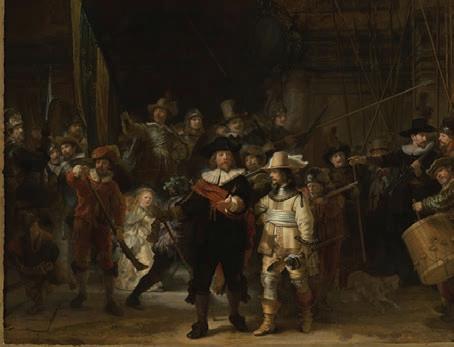
With the third movement we reach the heart of the piece: a D-minor Scherzo that doesn’t deliver the joke the word ‘scherzo’ implies, but instead takes you deep into the world of German Romanticism. Mahler marks it Schattenhaft (shadowy), and what you hear is unequivocally eery, brushing against cobwebs – although tempered by an element of entertainment, its potential softened by lullaby riffs and the ghost of a Viennese waltz before a concluding danse macabre.
The fourth movement brings the second designated Nachtmusik, this time in the more romantic guise of a serenade with solo writing for mandolin and guitar. The night has evidently turned into a night of love – which Mahler marks Andante amoroso.
But more drastic transformation comes in fifth movement when, with a sense of shock, we seem to have emerged from night into a dazzling sunlit morning. Presented as a rondo-finale that alternates repeated material with variations, in a blazing C major, the bravado of this movement with its rapid turnover of rustic dances, fanfares, pageantry and parody (including quotes from unlikely bedfellows: Wagner’s Meistersinger and Lehar’s Merry Widow) attract different readings. For some listeners its jubilation is jarring and vacuous. For others it can only work as irony. But with an open mind it’s surely possible to take
this music at face value: as a radiantly sunny destination reached after that long haul through the night. If nothing else, the clattering cowbells thrown into the texture raise a smile. Pure, childlike innocence, and utterly Mahlerian.
Michael White © 2023
Rembrandt’s Night Watch (1642), showing a group of City Guardsman awaiting their call to march. It’s famous for its use of light and shadow, and Mahler is known to have compared the painting, with its ‘night patrol’ theme and dramatic chiaroscuro, to the first Nachtmusik in his Seventh Symphony. Image credit: Rijksmuseum, Amsterdam





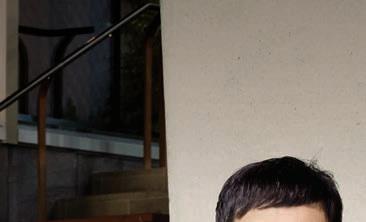


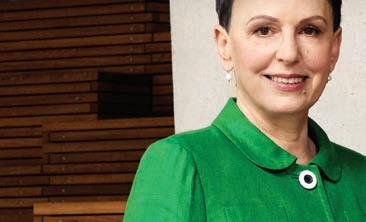


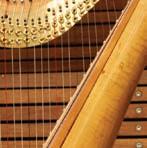





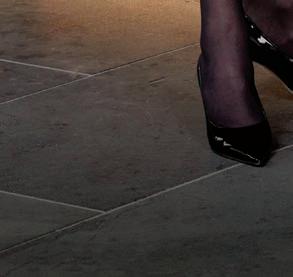
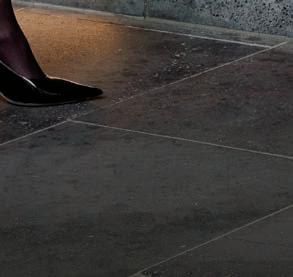

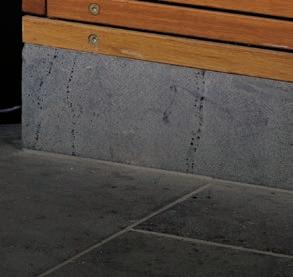 MSO Managing Director Sophie Galaise with cellist Nick Bochner and harpist Yinuo Mu
MSO Managing Director Sophie Galaise with cellist Nick Bochner and harpist Yinuo Mu
A TALE OF T WO O RCHESTRAS
A landmark partnership between the London and Melbourne Symphony orchestras is fostering new creative collaboration – including an Australian visit from the LSO that promises to be bold.
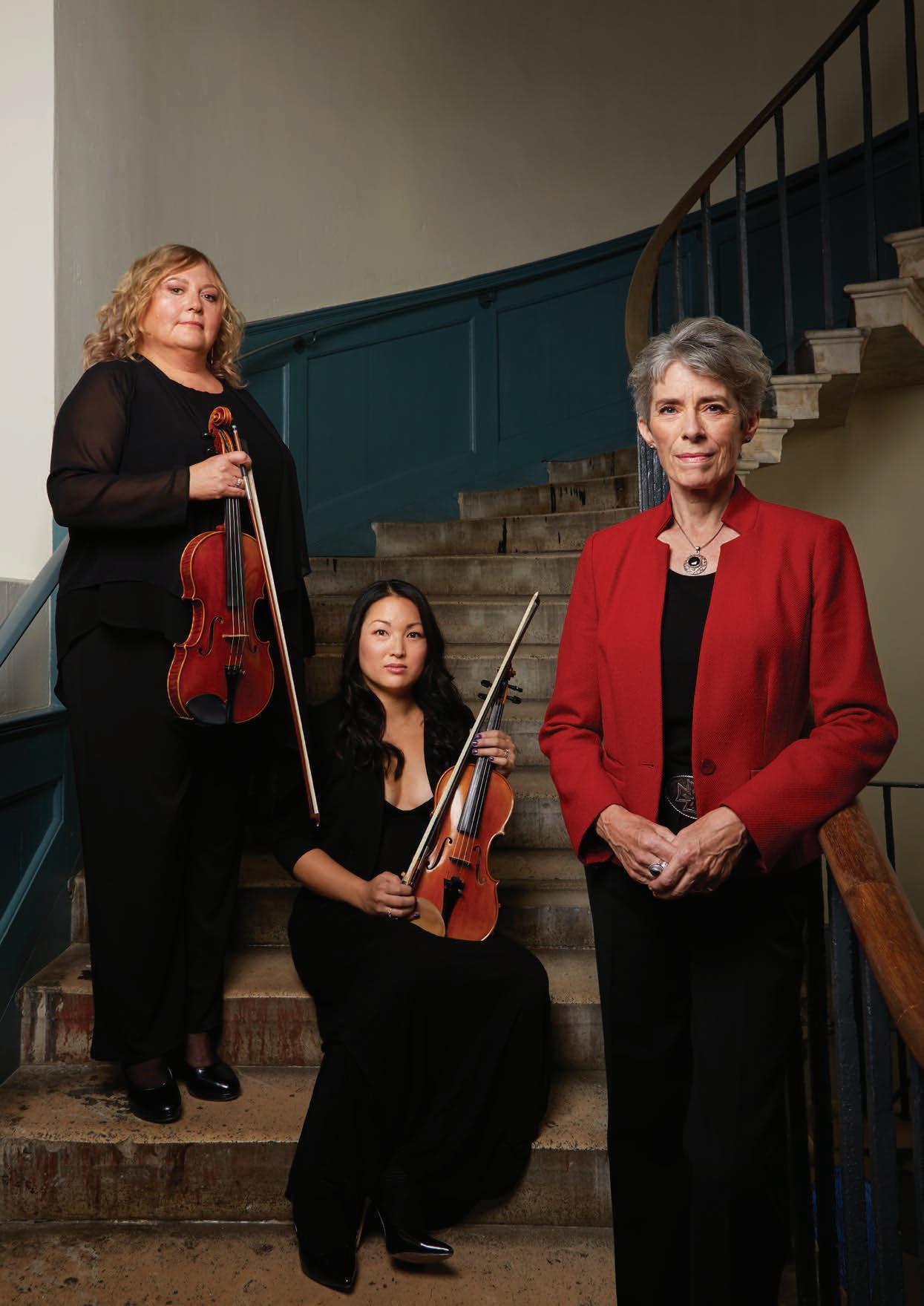 By Kim Thomson.
Photography JOHN DAVIS and DANIEL MAHON
LSO Managing Director Kathryn McDowell CBE DL with violinists Belinda ‘Bindi’ McFarlane and Naoko Keatley
By Kim Thomson.
Photography JOHN DAVIS and DANIEL MAHON
LSO Managing Director Kathryn McDowell CBE DL with violinists Belinda ‘Bindi’ McFarlane and Naoko Keatley
It was during the London Symphony Orchestra’s 2014 east-coast tour of Australia that Managing Director Kathryn McDowell CBE DL was first inspired by the land Down Under. But it wasn’t just the beauty of the landscape and the laid-back culture that left McDowell with warm memories, it was the unprecedented reception the LSO received during the visit. “The reaction that we had, in Queensland, in Sydney and in Melbourne, was so memorable – a real sense of a festival, of a very special occasion,” she says. “I absolutely loved it.” It was then McDowell first met Sophie Galaise, now Managing Director of the Melbourne Symphony Orchestra. The pair have since stayed in contact, often discussing how they may one day bring the two orchestras together to collaborate. In May 2023, the LSO return to Australian shores for the first time since 2014 – marking the LSO’s fourth visit in its almost 120-year history. The visit is part of a freshly inked, multi-pronged partnership between the two organisations, which will produce bold new works, facilitate knowledge sharing and see reciprocal international visits.
Galaise describes the two orchestras as “kindred spirits” – both artistically and in their commitment to doing things differently – and says these shared values will underpin the union.

“The LSO is an amazing orchestra to watch – they are in true partnership with the conductor onstage; the responsiveness of the musicians to the conductor is not one-way,” she says.
“We also have an orchestra that loves to show their passion, which can be seen in the way it engages and collaborates with, and responds to our chief conductor.”
The orchestras have something of a parallel history: in 1904, after a group of musicians broke away from the Queen’s Hall Orchestra, the LSO came into being; just two years later, halfway around the world, the MSO was formed.

Over the past few years, they’ve each been characterised by a fierce resolve to keep the wheels turning through dire circumstances. “At the MSO, there was a real galvanisation that I very much identified with [during the pandemic],” says McDowell. “The situation was really, very serious for musicians and artists, and remains so. I think there was a certain similarity in the way that we had to approach simply saving our organisations and moving things forward.”
McDowell says this year’s Australian tour will have
particular resonance in light of the past few years, and that the wide-ranging partnership aims to meaningfully consider the relationship between the two countries.
“There are still huge elements that bind our two nations – there’s a complex history that is something I think we’re all grappling with – so, in this moment, a shared understanding between organisations across the globe is a really valuable thing.”
Clockwise from top: The LSO rehearsing during COVID-19 lockdown; the MSO on stage during their 2022 Mid-Season Gala.
End of an era
For Australian audiences – in Melbourne, Sydney, and Brisbane – the LSO’s 2023 tour will feature beloved Music Director and symphonic superstar Sir Simon Rattle in his last Australian tour with the LSO before concluding his tenure as Chief Conductor to become Conductor Emeritus. Sir Simon says the chosen repertoire – to be performed by more than 110 LSO musicians – is deliberately bold and includes some of his “personal favourites”: Debussy, Ravel, Mahler and John Adams.
“There is Debussy and Ravel – La Mer and Suite No.2 from Daphnis and Chloé – delicate works that showcase the orchestra’s innate feel for French music,” he says.
“[And Adams’ Harmonielehre, which is] like nothing else – this is music on a vast scale, requiring a huge number of musicians, which we simply couldn’t have performed while social distancing measures were in place – so it’s incredibly exciting to be able to stage music on this scale again,” he says. McDowell is equally as enthusiastic about the chance to tour this selection. “We wanted to bring a really dynamic repertoire to Australia – like John Adams’ Harmonielehre, which is an absolutely blistering piece; it’s what I would call a very LSO piece – it has a bravura, a sort of sparkle and precision,” she says. “There’s also Mahler 7, which is an extraordinary work that is very close to the heart of the LSO and Sir Simon Rattle, so it’s lovely to be bringing that as well. If one’s going to make the effort to travel across the world, it has to be special.”
Galaise says the LSO are set for another warm reception from Australian audiences. “We’re lucky to have one of the greatest orchestras on this planet come to visit us – and with Sir Simon at the end of his tenure, it will be very significant; it will be the end of an era for the LSO and we will be witness to that.”
Thanks to the Gandel Foundation
The milestone partnership between the Melbourne and London Symphony Orchestras has been made possible by the Gandel Foundation’s contribution to the MSO’s Now and Forever Future Fund, which supports international engagement and collaboration.

John Gandel AC and Pauline Gandel AC said they were delighted and excited to join forces yet again with the MSO and are keenly anticipating the LSO’s visit to Australian shores.

“The role of the arts – including music – in helping people look to the future with hope and brightness in their hearts is possibly more important now, in the times of COVID, than ever before,” they said.
“Indeed, the MSO plays a vitally important role in enriching our lives, and by connecting internationally, they also help Australians to have that important window to the rest of the world and experience the best it has to offer.”
The Gandel Foundation provides grants to organisations in a range of spheres, including education, disadvantage, mental health, digital equality and the arts.
Photography: Mark Allan; Dylan Stewart
Uplifting emerging artists
As well as assistance to tour in each other’s country, another key plank of the partnership is the chance to support emerging artists from each country, including those from MSO Academy and the LSO String Academy.
Galaise says there will be a particular focus on supporting First Nations artists. “To my knowledge, the MSO is the only orchestra in Australia that has a First Nations ensemble in residence – young, amazing Indigenous musicians coming from all over the country – who are being trained and accompanied in their development by the MSO,” she says. “We would like to give these emerging artists a chance in London, and an opportunity to be in close contact with amazing musicians from the LSO – to learn about their activities and to showcase their tradition,” she says.
McDowell adds that the LSO will share its depth of experience in education and community work, which has long been a priority area for the Orchestra. “The LSO works a lot with socially disadvantaged and culturally diverse young people in London … in fact, one of our violinists, Belinda McFarlane, who is Australian, has been a driving force behind our Discovery program for 25 years now.”
An innovative future
The four-year deal will see new works cocommissioned by composers from each country, to be performed by both Orchestras. “The voices of Australian artists will be heard in the UK and the voices of British composers will be heard here in Australia,” as Galaise puts it. The partnership will also create new digital audio opportunities, including MSO content being distributed across the LSO’s pioneering platform, LSO Live. The orchestra-owned recording label, set-up more than two decades ago, aims to bring classical music to new audiences, and ensures its players and conductors remain stakeholders in their own recordings. “We’ve built that over the years and shared that practice around the world with certain territories, but we haven’t yet had a partnership in Australasia, so that’s a very interesting area,” says McDowell. Galaise says there are several projects already underway and more ideas keep developing organically.

“This is what real exchange is like,” she says, “you collaborate and start with one thing, but then it grows bigger and bigger over time.” ■
Two Australians in London
The Australia visit holds particular significance for two LSO members. Violinists Belinda ‘Bindi’ McFarlane, originally from Adelaide, and Naoko Keatley, from Sydney, will relish the chance to perform for family and friends in Australia – the first time they’ve done so with the LSO since 2014.


Keatley says it’s still a thrill to be playing to large live audiences and touring internationally again. “The first time we played for an un-distanced audience [since the pandemic began] was in Aix-en-Provence in June 2021, performing Tristan to a packedout opera house,” she says. “We got a standing ovation and actually had tears in our eyes –it was that moving!”
For McFarlane, she is excited to be exploring further opportunities to work with young musicians from underrepresented backgrounds during the MSO and LSO partnership.
“At the LSO, we’re very committed to reaching out in the community around us,” she says. “It’s not enough to be solely on stage, performing to an audience, it’s also important to take the music out of the concert hall – it gives a deeper validity to our existence as an orchestra.”
Iconic conductor
P
Sir Simon Rattle leading the Orchestra.
hotography: Tina Korhonent
WHAT IS THE MEASURE OF A FULL LIFE?
At Ryman, we believe the measure of a full life is one that gets richer with age. A life where you can appreciate the little things.
Rediscover lost passions and plunge headfirst into new ones.
Surround yourself with new people, old friends and close family.
Live with opportunities and experiences at your doorstep.
That’s why we’re creating communities that challenge the expectations of ageing, while bringing joy and meaning to every moment.

rymanhealthcare.com.au
EBBIE & PREMILA Ryman Residents
Credits
LONDON SYMPHONY ORCHESTRA
FIRST VIOLINS
José Blumenschein
Guest Leader
Carmine Lauri
Clare Duckworth
Ginette Decuyper
Maxine Kwok
William Melvin
Laurent Quénelle
Harriet Rayfield
Sylvain Vasseur
Rhys Watkins
Julian Azkoul
Morane Cohen-Lamberger
Grace Lee
Dániel Mészöly
Patrick Savage
Momo Wong
SECOND VIOLINS
David Alberman
Thomas Norris
Sarah Quinn
Miya Väisänen
David Ballesteros
Matthew Gardner
Naoko Keatley
Alix Lagasse
Belinda McFarlane
Iwona Muszynska
Csilla Pogany
Sabrina Bradford
Chelsea Sharpe
VIOLAS
Jane Atkins
Gillianne Haddow
Malcolm Johnston
Germán Clavijo
Steve Doman
Robert Turner
Cynthia Blanchon
Luca Casciato
Errika Collins
Cynthia Perrin
Alistair Scahill
CELLOS
Rebecca Gilliver
Anna Garde
Alastair Blayden
Daniel Gardner
Laure Le Dantec
Ken Ichinose
Desmond Neysmith
Peteris Sokolovskis
Francois Thirault
DOUBLE BASSES
David Stark
Patrick Laurence
Matthew Gibson
Joe Melvin
Jani Pensola
Chaemun Im
Kai Kim Simon Oliver
FLUTES
Gareth Davies
Amy Yule
Sarah Bennett
PICCOLOS
Sharon Williams
Patricia Moynihan
OBOES
Juliana Koch
Olivier Stankiewicz
Henrietta Cooke
COR ANGLAIS
Maxwell Spiers
CLARINETS
Chris Richards
Ben Mellefont
Chi-Yu Mo
Andrew Harper
BASS CLARINETS
Kenny Keppel
Andrew Harper
BASSOONS
Daniel Jemison
Todd Gibson-Cornish
Joost Bosdijk
CONTRA BASSOON
Rebecca Koopmans
HORNS
Timothy Jones
Nick Mooney
Angela Barnes
Olivia Gandee
Jonathan Maloney
TRUMPETS
James Fountain
Gareth Small
Adam Wright
Niall Keatley
David Geoghegan
TROMBONES
Peter Moore
Simon Johnson
Jonathan Hollick
BASS TROMBONE
Paul Milner
TUBAS
Ben Thomson
Carl Woodcroft
TIMPANI
Nigel Thomas
Patrick King
PERCUSSION
Neil Percy
David Jackson
Patrick King
Tom Edwards
Jeremy Cornes
Paul Stoneman
Jacob Brown
John Arcaro
Shaun Trubiano
HARPS
Bryn Lewis
Manon Morris
PIANO
Joseph Havlat
CELESTE
Zeynep Özsuca
GUITAR
Tom Ellis
MANDOLIN
Daniel Thomas
MUSIC DIRECTOR
Sir Simon Rattle OM CBE
PRINCIPAL GUEST CONDUCTORS
Gianandrea Noseda, François-Xavier Roth
ASSOCIATE ARTISTS
Barbara Hannigan, André J Thomas
CONDUCTOR LAUREATE
Michael Tilson Thomas
MANAGING DIRECTOR
Kathryn McDowell CBE DL
HEAD OF PRESS & EXTERNAL AFFAIRS



Christopher Millard
PRODUCER, SPECIAL PROJECTS & TOURS
Tim Davy
PERSONNEL MANAGER
Emily Rutherford
TOURS MANAGER
Mary Phillips
LIBRARIAN
Alice Gray
SENIOR STAGE MANAGER
Sophia Tuffin
STAGE MANAGER
Seif O’Reilly
Percussion equipment for the London Symphony Orchestra’s 2023 Australia Tour has been provided by the Royal Australian Air Force Band.
Thank you to our Supporters
MSO PATRON
The Honourable Linda Dessau AC CVO, Governor of Victoria
CHAIRMAN’S CIRCLE
Mr Marc Besen AC and the late Mrs Eva Besen AO
Gandel Foundation
The Gross Foundation
Di Jameson and Frank Mercurio
Harold Mitchell Foundation
Lady Potter AC CMRI
Cybec Foundation
The Pratt Foundation
The Ullmer Family Foundation
Anonymous
ARTIST CHAIR BENEFACTORS
Chief Conductor Jaime Martín
Mr Marc Besen AC and the late
Mrs Eva Besen AO
Cybec Assistant Conductor Chair
Carlo Antonioli
Cybec Foundation
Concertmaster Chair Dale Barltrop
David Li AM and Angela Li
Assistant Concertmaster
Tair Khisambeev
Di Jameson and Frank Mercurio
Young Composer in Residence
Melissa Douglas
Cybec Foundation
2023 Composer in Residence
Mary Finsterer
Kim Williams AM
PROGRAM BENEFACTORS
MSO Now & Forever Fund: International Engagement
Gandel Foundation
Cybec 21st Century Australian Composers Program
Cybec Foundation
Digital Transformation
The Margaret Lawrence Bequest –
Managed by Perpetual, Perpetual Foundation – Alan (AGL) Shaw
Endowment
First Nations Emerging Artist Program
The Ullmer Family Foundation
East meets West
The Li Family Trust, National Foundation for Australia-China
Relations
MSO Live Online
Crown Resorts Foundation, Packer Family Foundation
MSO Education Anonymous
MSO Academy
Di Jameson and Frank Mercurio
MSO For Schools
Crown Resorts Foundation, Packer Family Foundation, The Department of Education, Victoria, through the Strategic Partnerships Program
Melbourne Music Summit
The Department of Education, Victoria, through the Strategic Partnerships Program
MSO Regional Touring
Creative Victoria, Freemasons Foundation Victoria, Robert Salzer Foundation, The Sir Andrew & Lady Fairley Foundation
Music and Ideas and Ears Wide Open City of Melbourne
The Pizzicato Effect
Hume City Council’s Community Grants program, The Marian and E.H. Flack Trust, Flora & Frank Leith Charitable Trust, Australian Decorative And Fine Arts Society, Anonymous
Sidney Myer Free Concerts
Sidney Myer MSO Trust Fund and the University of Melbourne
PLATINUM PATRONS $100,000+
Mr Marc Besen AC and the late Mrs Eva Besen AO
The Gandel Foundation
The Gross Foundation
Di Jameson and Frank Mercurio
David Li AM and Angela Li
Lady Primrose Potter AC CMRI
Anonymous (1)
VIRTUOSO PATRONS $50,000+
Margaret Jackson AC
Weis Family
The Ullmer Family Foundation
Anonymous (1)
IMPRESARIO PATRONS $20,000+
Harold Bentley
The Hogan Family Foundation
David Krasnostein AM and Pat Stragalinos
Paul Noonan
Opalgate Foundation
Lady Marigold Southey AC
Kim Williams AM
Anonymous (1)
MAESTRO PATRONS $10,000+
Christine and Mark Armour
Margaret Billson and the late Ted Billson
Shane Buggle and Rosie Callanan
Krystyna Campbell-Pretty AM
Andrew Dudgeon AM
Colin Golvan AM KC and Dr Deborah Golvan
Danny Gorog and Lindy Susskind
Peter Lovell
Maestro Jaime Martín
Ian and Jeannie Paterson
Elizabeth Proust AO and Brian
Lawrence
Yashian Schauble
Glenn Sedgwick
The Sun Foundation
David and Gai Taylor
Athalie Williams and Tim Danielson
Lyn Williams AM
Wingate Group
Jason Yeap OAM – Mering
Management Corporation
Anonymous (2)
PRINCIPAL PATRONS $5,000+
Mary Armour
John and Lorraine Bates
Barbara Bell in memory of Elsa Bell
Bodhi Education Fund (East meets West)
Julia and Jim Breen
Oliver Carton
John Coppock OAM and Lyn Coppock
Perri Cutten and Jo Daniell
Ann Darby in memory of Leslie J. Darby
Mary Davidson and the late Frederick Davidson AM
The Dimmick Charitable Trust
Tim and Lyn Edward
Jaan Enden
Bill Fleming
Dr John and Diana Frew
Susan Fry and Don Fry AO
Sophie Galaise and Clarence Fraser
Geelong Friends of the MSO
Jennifer Gorog
Dr Rhyl Wade and Dr Clem Gruen
Cecilie Hall and the late Hon Michael Watt KC
Hilary Hall in memory of Wilma Collie
Louis J Hamon OAM
Nereda Hanlon and Michael Hanlon AM
Dr Alastair Jackson AM
Paul and Amy Jasper
Merv Keehn and Sue Harlow
Suzanne Kirkham
Dr Elizabeth A Lewis AM
Sherry Li
Dr Caroline Liow
Gary McPherson
The Mercer Family Foundation
Marie Morton FRSA
Anne Neil
Hyon-Ju Newman
Newton Family in memory of Rae Rothfield
Ken Ong OAM
Bruce Parncutt AO
Sam Ricketson and Rosemary Ayton
Andrew and Judy Rogers
Rosemary and the late Douglas Meagher
The Rosemary Norman Foundation
Guy Ross
The Kate and Stephen Shelmerdine Family Foundation
Helen Silver AO and Harrison Young
Anita Simon
Brian Snape AM
Dr Michael Soon
Dawna Wright and Peter Riedel
Anonymous (2)
ASSOCIATE PATRONS $2,500+
Carolyn Baker
Marlyn Bancroft and Peter Bancroft OAM
Sascha O. Becker
Janet H Bell
Alan and Dr Jennifer Breschkin
Patricia Brockman
Drs John D L Brookes and Lucy V Hanlon
Stuart Brown
Lynne Burgess
Dr Lynda Campbell
Janet Chauvel and the late Dr Richard Chauvel
Breen Creighton and Elsbeth
Hadenfeldt
The Cuming Bequest
Katherine Cusack
Leo de Lange
Sandra Dent
Barry Fradkin OAM and Dr Pam Fradkin
Carrillo Gantner AC and Ziyin Gantner
Kim and Robert Gearon
Janette Gill
R Goldberg and Family
Goldschlager Family Charitable Foundation
Catherine Gray
Hartmut and Ruth Hofmann
John Jones
LRR Family Trust
Margaret and John Mason OAM
H E McKenzie
Dr Isabel McLean
Ian Merrylees
Patricia Nilsson
Dr Paul Nisselle AM and Sue Nisselle
Alan and Dorothy Pattison
Sue and Barry Peake
David and Nancy Price
Peter Priest
Ruth and Ralph Renard
Tom and Elizabeth Romanowski
Liliane Rusek and Alexander Ushakoff
Jeffrey Sher KC and Diana Sher OAM
Barry Spanger
Steinicke Family
Peter J Stirling
Jenny Tatchell
Clayton and Christina Thomas
Elaine Walters OAM
Janet Whiting AM
Nic and Ann Willcock
Anonymous (4)
PLAYER PATRONS $1,000+
Dr Sally Adams
Anita and Graham Anderson
Australian Decorative & Fine Arts
Society
Geoffrey and Vivienne Baker
Michael Bowles and Alma Gill
Joyce Bown
Miranda Brockman
Nigel Broughton and Sheena Broughton
Suzie Brown OAM and the late Harvey Brown
Dr Robin Burns and Dr Roger Douglas
Ronald and Kate Burnstein
Kaye Cleary
John and Mandy Collins
Andrew Crockett AM and Pamela Crockett
Dr Daryl and Nola Daley
Panch Das and Laurel Young-Das
Michael Davies
Natasha Davies for the Trikojus Education Fund
Rick and Sue Deering
Suzanne Dembo
John and Anne Duncan
Jane Edmanson OAM
Diane Fisher
Grant Fisher and Helen Bird
Alex Forrest
Applebay Pty Ltd
David and Esther Frenkiel OAM
Anthony Garvey and Estelle
O’Callaghan
David I Gibbs AM and Susie O’Neill
Sonia Gilderdale
Dr Celia Godfrey
Dr Marged Goode
Dr Sandra Hacker AO and Ian Kennedy AM
Dawn Hales
David Hardy
Tilda and the late Brian Haughney
Susan and Gary Hearst
Cathy Henry
Jennifer Henry
Dr Keith Higgins
Anthony and Karen Ho
Peter and Jenny Hordern
Katherine Horwood
Penelope Hughes
Shyama Jayaswal
Basil and Rita Jenkins
Sandy Jenkins
Sue Johnston
John Kaufman
Angela Kayser
Drs Bruce and Natalie Kellett
Dr Anne Kennedy
Tim Knaggs
Dr Jerry Koliha and Marlene Krelle
Jane Kunstler
Ann Lahore
Kerry Landman
Kathleen and Coran Lang
Janet and Ross Lapworth
Bryan Lawrence
Phil Lewis
Andrew Lockwood
Elizabeth H Loftus
Chris and Anna Long
Gabe Lopata
John MacLeod
Eleanor & Phillip Mancini
Aaron McConnell
Wayne McDonald and Kay Schroer
Ray McHenry
John and Rosemary McLeod
Don and Anne Meadows
Dr Eric Meadows
Professor Geoffrey Metz
Sylvia Miller
Ian Morrey and Geoffrey Minter
Dr Anthony and Dr Anna Morton
Laurence O’Keefe and Christopher
James
Roger Parker
Ian Penboss
Eli Raskin
Jan and Keith Richards
James Ring
Dr Peter Rogers and Cathy Rogers OAM
Dr Ronald and Elizabeth Rosanove
Marie Rowland
Jan Ryan
Martin and Susan Shirley
P Shore
John E Smith
Dr Peter Strickland
Dr Joel Symons and Liora Symons
Russell Taylor and Tara Obeyesekere
Geoffrey Thomlinson
Frank Tisher OAM and Dr Miriam Tisher
Andrew and Penny Torok
Christina Turner
Ann and Larry Turner
Leon and Sandra Velik
The Reverend Noel Whale
Edward and Paddy White
Terry Wills Cooke OAM and
the late Marian Wills Cooke
Robert and Diana Wilson
Richard Withers
Lorraine Woolley
Youth Music Foundation
Shirley and Jeffrey Zajac
Anonymous (12)
OVERTURE PATRONS $500+
Margaret Abbey PSM
Jane Allan and Mark Redmond
Mario M Anders
Jenny Anderson
Peter Batterham
Benevity Australia Online Giving Foundation
Peter Berry and Amanda Quirk
Dr William Birch AM
Allen and Kathryn Bloom
Linda Brennan
Dr Robert Brook
Elizabeth Brown
John Brownbill
Roger and Coll Buckle
Cititec Systems
Charmaine Collins
Dr Sheryl Coughlin and Paul Coughlin
Judith Cowden in memory of violinist
Margaret Cowden
Dr Oliver Daly and Matilda Daly
Merrowyn Deacon
Bruce Dudon
Melissa and Aran Fitzgerald
Brian Florence
Elizabeth Foster
Mary Gaidzkar
Simon Gaites
Dr Mary-Jane Gething
David and Geraldine Glenny
Hugo and Diane Goetze
Louise Gourlay OAM
Robert and Jan Green
George Hampel AM KC and Felicity Hampel AM SC
Geoff Hayes
Jim Hickey
William Holder
Clive and Joyce Hollands
Rod Home
R A Hook
Gillian Horwood
Geoff and Denise Illing
Wendy Johnson
John and Christine Keys
Belinda and Malcom King
Professor David Knowles and Dr Anne McLachlan
Pauline and David Lawton
Paschalina Leach
Dr Jenny Lewis
Sharon Li
The Podcast Reader
Janice Mayfield
Shirley A McKenzie
Dr Alan Meads and Sandra Boon
Marie Misiurak
Joan Mullumby
Dr Judith S Nimmo
Estelle O’Callaghan
Brendan O’Donnell
David Oppenheim
Sarah Patterson
Adriana and Sienna Pesavento
Kerryn Pratchett
Professor Charles Qin OAM and Kate Ritchie
Alfonso Reina and Marjanne Rook
Professor John Rickard
Dr Anne Ryan
Viorica Samson
Carolyn Sanders
Dr Nora Scheinkestel
Julia Schlapp
Dr Alex Starr
Dylan Stewart
Ruth Stringer
Tom Sykes
Reverend Angela Thomas
Rosemary Warnock
Nickie Warton and Grant Steel
Amanda Watson
Deborah Whithear and Dr Kevin Whithear OAM
Dr Susan Yell
Anonymous (15)
CONDUCTOR’S CIRCLE
Jenny Anderson
David Angelovich
G C Bawden and L de Kievit
Lesley Bawden
Joyce Bown
Mrs Jenny Bruckner and the late Mr John Bruckner
Ken Bullen
Peter A Caldwell
Luci and Ron Chambers
Beryl Dean
Sandra Dent
Alan Egan JP
Gunta Eglite
Marguerite Garnon-Williams
Drs L C Gruen and R W Wade
Louis J Hamon AOM
Charles Hardman
Carol Hay
Jennifer Henry
Graham Hogarth
Rod Home
Lyndon Horsburgh
Tony Howe
Lindsay and Michael Jacombs
Laurence O’Keefe and Christopher James
John Jones
Grace Kass and the late George Kass
Sylvia Lavelle
Pauline and David Lawton
Cameron Mowat
Ruth Muir
David Orr
Matthew O’Sullivan
Rosia Pasteur
Penny Rawlins
Joan P Robinson
Anne Roussac-Hoyne and Neil Roussac
Michael Ryan and Wendy Mead
Andrew Serpell and Anne Kieni Serpell
Jennifer Shepherd
Suzette Sherazee
Dr Gabriela and Dr George Stephenson
Pamela Swansson
Lillian Tarry
Tam Vu and Dr Cherilyn Tillman
Mr and Mrs R P Trebilcock
Peter and Elisabeth Turner
Michael Ulmer AO
The Hon. Rosemary Varty
Terry Wills Cooke OAM and the late Marian Wills Cooke
Mark Young
Anonymous (19)
The MSO gratefully acknowledges the support of the following Estates:
Norma Ruth Atwell
Angela Beagley
Christine Mary Bridgart
The Cuming Bequest
Margaret Davies
Neilma Gantner
The Hon Dr Alan Goldberg AO QC
Enid Florence Hookey
Gwen Hunt
Family and Friends of James Jacoby
Audrey Jenkins
Joan Jones
Pauline Marie Johnston
C P Kemp
Peter Forbes MacLaren
Joan Winsome Maslen
Lorraine Maxine Meldrum
Prof Andrew McCredie
Jean Moore
Joan P Robinson
Maxwell Schultz
Miss Sheila Scotter AM MBE
Marion A I H M Spence
Molly Stephens
Gwennyth Muriel St John
Halinka Tarczynska-Fiddian
Jennifer May Teague
Albert Henry Ullin
Jean Tweedie
Herta and Fred B Vogel
Dorothy Wood
COMMISSIONING CIRCLE
Mary Armour
Cecilie Hall and the Late Hon Michael Watt KC
Tim and Lyn Edward
Kim Williams AM
Weis Family
FIRST NATIONS CIRCLE
John and Lorraine Bates
Colin Golvan AM KC and Dr Deborah Golvan
Sascha O. Becker
Maestro Jaime Martín
Elizabeth Proust AO and Brian
Lawrence
The Kate and Stephen Shelmerdine
Family Foundation
Michael Ullmer AO and Jenny Ullmer
Jason Yeap OAM – Mering Management Corporation
ADOPT A MUSICIAN
Mr Marc Besen AC and the late Mrs Eva Besen AO
Chief Conductor Jaime Martín
Shane Buggle and Rosie Callanan
Roger Young
Andrew Dudgeon AM
Rohan de Korte, Philippa West
Tim and Lyn Edward
John Arcaro
Dr John and Diana Frew
Rosie Turner
Sophie Galaise and Clarence Fraser
Stephen Newton
Dr Mary-Jane H Gething AO
Monica Curro
The Gross Foundation
Matthew Tomkins
Dr Clem Gruen and Dr Rhyl Wade
Robert Cossom
Danny Gorog and Lindy Susskind
Monica Curro
Cecilie Hall and the late Hon Michael Watt KC
Saul Lewis
Nereda Hanlon and Michael Hanlon AM
Abbey Edlin
Margaret Jackson AC
Nicolas Fleury
Di Jameson and Frank Mercurio
Benjamin Hanlon, Tair Khisambeev, Christopher Moore
Dr Elizabeth A Lewis AM
Anthony Chataway
David Li AM and Angela Li
Dale Barltrop
Gary McPherson
Rachel Shaw
Hyon-Ju Newman
Patrick Wong
Newton Family in memory of Rae Rothfield
Cong Gu
The Rosemary Norman Foundation
Ann Blackburn
Andrew and Judy Rogers
Michelle Wood
Glenn Sedgwick
Tiffany Cheng, Shane Hooton
Dr Martin Tymms and Patricia Nilsson
Natasha Thomas
Anonymous
Prudence Davis
HONORARY APPOINTMENTS
Life Members
Mr Marc Besen AC
John Gandel AC and Pauline Gandel AC
Sir Elton John CBE
Harold Mitchell AC
Lady Potter AC CMRI
Jeanne Pratt AC
Michael Ullmer AO and Jenny Ullmer
Anonymous
MSO Ambassador
Geoffrey Rush AC
The MSO honours the memory of Life Members
Mrs Eva Besen AO
John Brockman OAM
The Honourable Alan Goldberg AO QC
Roger Riordan AM
Ila Vanrenen
MSO ARTISTIC FAMILY
Jaime Martín
Chief Conductor
Xian Zhang
Principal Guest Conductor
Benjamin Northey
Principal Conductor in Residence
Carlo Antonioli
Cybec Assistant Conductor Fellow
Sir Andrew Davis
Conductor Laureate
Hiroyuki Iwaki † Conductor Laureate (1974–2006)
Warren Trevelyan-Jones
MSO Chorus Director
Siobhan Stagg
2023 Soloist in Residence
Gondwana Voices
2023 Ensemble in Residence
Christian Li
Young Artist in Association
Mary Finsterer
2023 Composer in Residence
Melissa Douglas
2023 Cybec Young Composer in Residence
Christopher Moore
Creative Producer, MSO Chamber
Deborah Cheetham Fraillon AO
MSO First Nations Creative Chair
Dr Anita Collins
Creative Chair for Learning and Engagement
Artistic Ambassadors
Tan Dun
Lu Siqing
There’s no other

PREMIUM ECONOMY


like it

Sink into soft leather seats and stretch out on raised cushioned leg rests. Enjoy delicious regional dining with complimentary premium beverages, and recline in comfort to a movie on your HD TV. Experience the new Premium Economy cabins on flights from Melbourne to London Heathrow.


 Governor of Victoria and MSO Patron
Governor of Victoria and MSO Patron

































 MSO Managing Director Sophie Galaise with cellist Nick Bochner and harpist Yinuo Mu
MSO Managing Director Sophie Galaise with cellist Nick Bochner and harpist Yinuo Mu
 By Kim Thomson.
Photography JOHN DAVIS and DANIEL MAHON
LSO Managing Director Kathryn McDowell CBE DL with violinists Belinda ‘Bindi’ McFarlane and Naoko Keatley
By Kim Thomson.
Photography JOHN DAVIS and DANIEL MAHON
LSO Managing Director Kathryn McDowell CBE DL with violinists Belinda ‘Bindi’ McFarlane and Naoko Keatley















